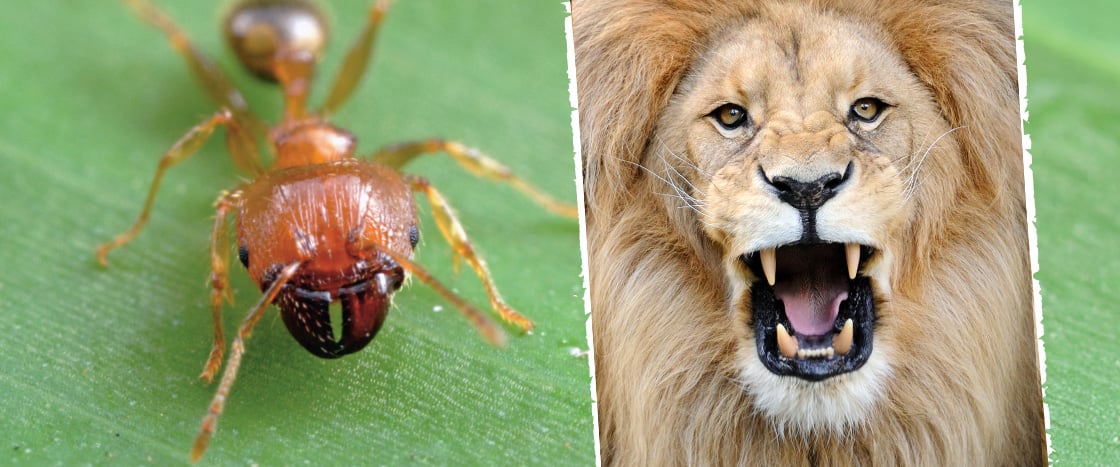What are the most powerful animals on the African savanna? It’s hard not to think, “Lions, of course!” They can run as fast as a racehorse, 50 miles per hour (80 kilometers per hour). Their mighty jaws can kill prey in a single bite.
However, in one area of Kenya, the answer isn’t so simple. Lions there are experiencing a shake-up that’s changing how they hunt and what they eat. The cause? A creature smaller than a grain of rice: an ant.
This kind of ant, called the “big-headed ant,” is an invasive species. It’s rapidly spreading in a place it doesn’t belong. The ant has caused a chain reaction affecting an entire food web—including elephants, zebras, and lions. How could a tiny ant make problems for a lion? The story starts with a different ant and its special relationship with a tree.
What are the most powerful animals on the African savanna? It’s hard not to think, “Lions, of course!” They can run 50 miles per hour (80 kilometers per hour). That’s as fast as a racehorse. Their strong jaws can kill prey in a single bite.
However, the answer isn’t so simple in one area of Kenya. Lions there are facing a shake-up. It’s changing how they hunt and what they eat. The cause is an animal smaller than a grain of rice. It’s an insect called the “big-headed ant.”
This ant is an invasive species. It’s quickly spreading in a place it doesn’t belong. The ant is affecting an entire food web. It includes elephants, zebras, and lions. How could a tiny ant make problems for a lion? The story starts with another ant and its special relationship with a tree.

